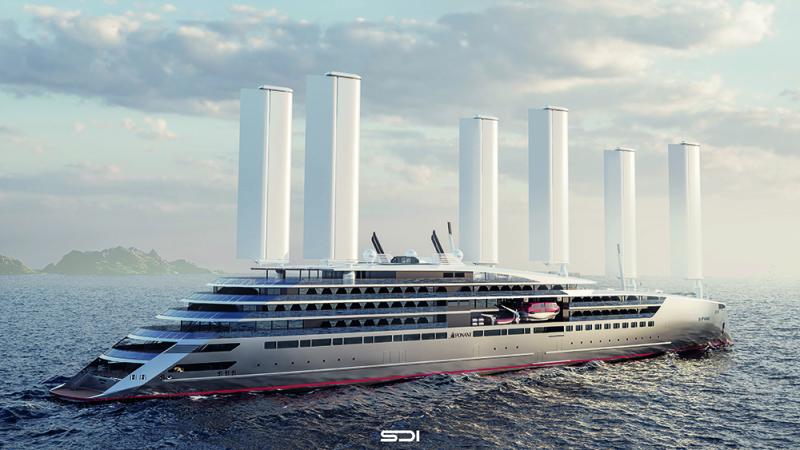Ponant this week has unveiled the look of its newly designed transoceanic ship that will reportedly have zero greenhouse gas emissions when sailing, maneuvering, in port or at anchor. The new vessel will debut by 2030.
The company says its R&D team has created a concept that combines six “groundbreaking technologies that will redefine future navigation.” The sailing ship, which will be ready by 2030, aims to be a catalyst for new energy solutions for both Ponant and the broader industry. The cruise line will be working with naval architecture firm Stirling Design International on the look, discussions are ongoing to select the shipyard for the delivery of the vessel.
According to Hervé Gastinel, CEO of Ponant “renewable energy supplied by the wind and sun will be combined with low-carbon non-fossil energy associated with fuel cells,” meaning the ship’s carbon footprint will be reduced throughout its lifecycle. In line with new European and international regulations on greenhouse gas emissions, Ponant says it will be selecting equipment and materials based on an analysis of their lifecycle through to the recycling of waste.
The ship will be about 600 feet long and will offer around 100 staterooms—but other guest-facing spaces and amenities have yet to be announced. That said, the ship will be part of the Ponant Science program, in line with the company’s commitment to scientists. It will host researchers involved in decarbonization technologies, a major challenge in the battle to control global warming.

Swap2Zero aims for zero carbon dioxide equivalent (CO2 eq) emissions in operation, with one month autonomy by being the first to combine six major decarbonization technology building blocks:
- A sail power system and hull providing an average of 50 percent of the propulsion energy using the force of the wind
- A surface area totaling over 10,700 square feet of photovoltaic panels, with new-generation organic solar eco-designed devices integrated into the structures and sails
- A low-temperature fuel cell operating on liquid hydrogen for propulsion, with the water and heat produced being recycled
- A high-temperature fuel cell to meet the ship’s hotel load requirements, with the heat emitted being recovered and used to produce hot water
- On-board carbon capture technology, coupled with the high-temperature fuel cell
- A bespoke energy management system to control and distribute power without any generators being in service
Related Articles
Polar Journeys: Sailings to the Ends of the Earth
Silversea Gains Environmental Certification in the Galapagos